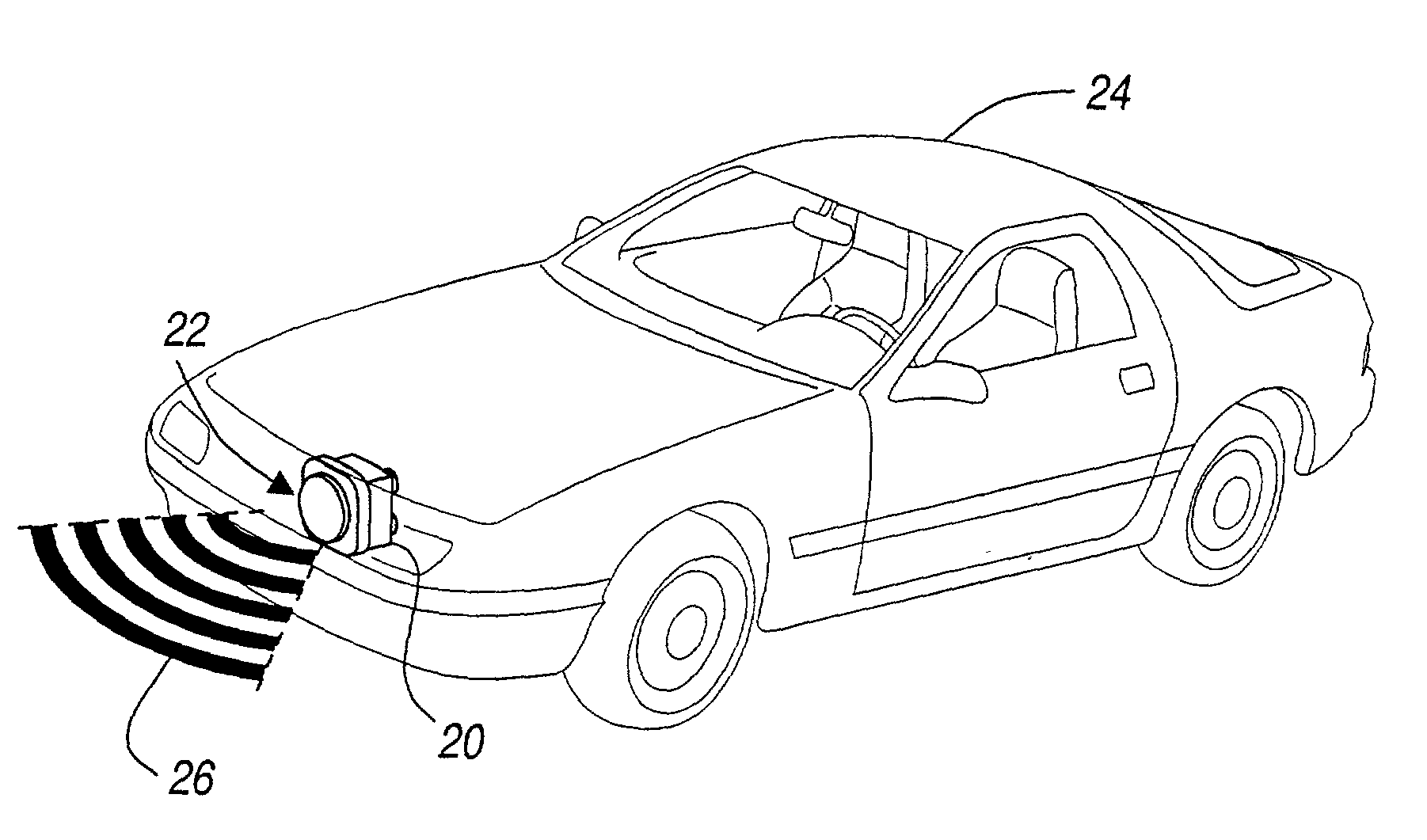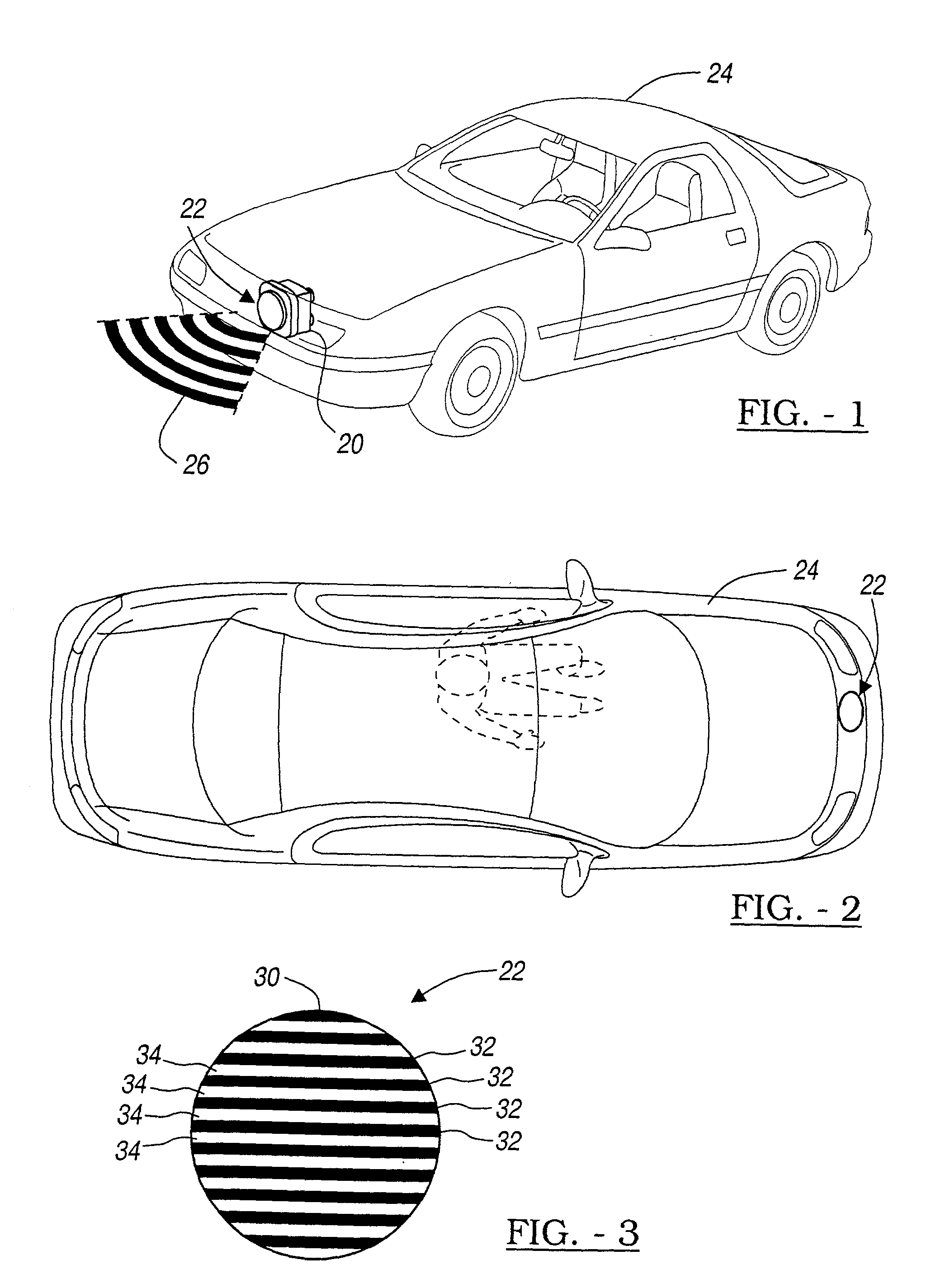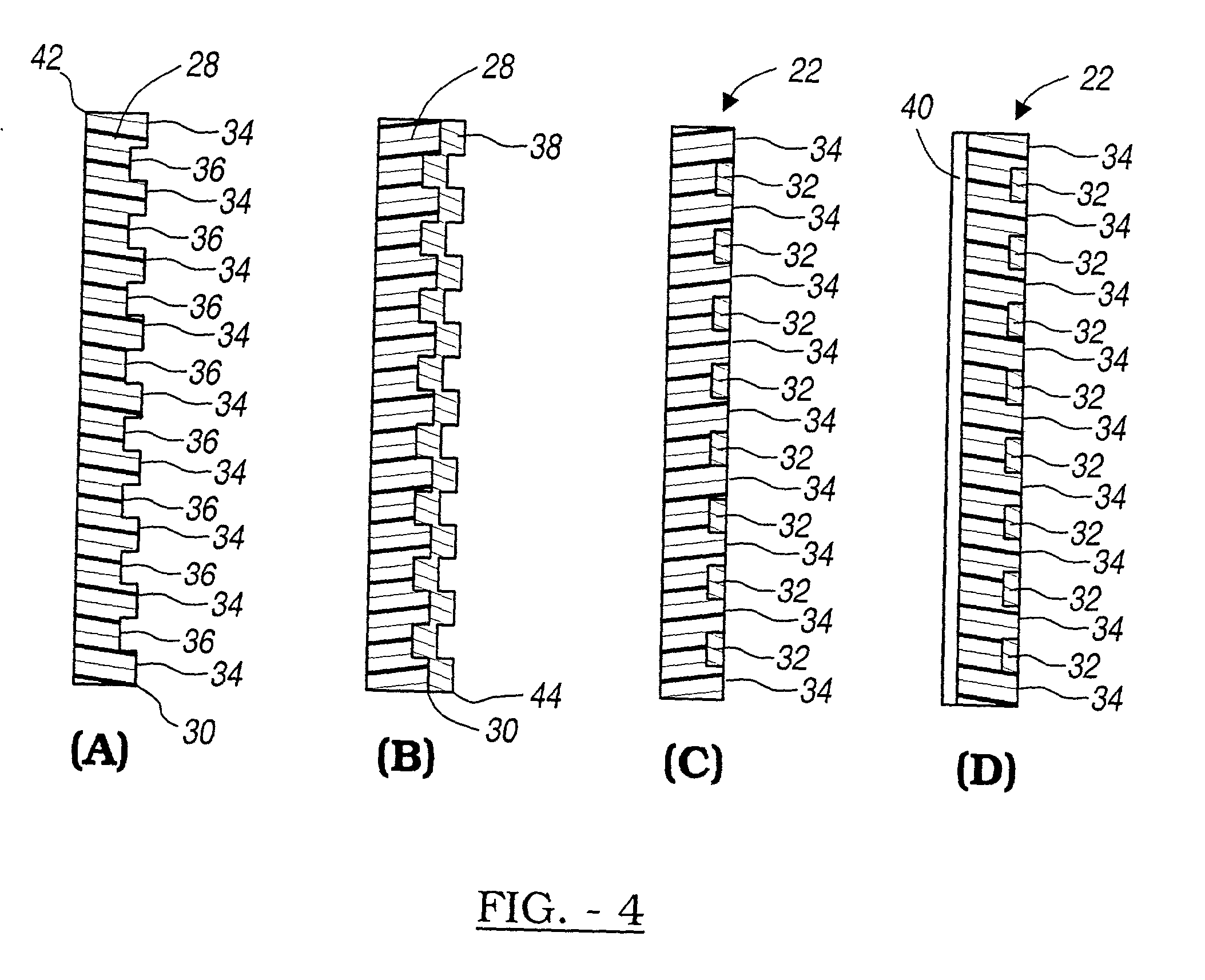Sensor cover and method of construction thereof
- Summary
- Abstract
- Description
- Claims
- Application Information
AI Technical Summary
Benefits of technology
Problems solved by technology
Method used
Image
Examples
Embodiment Construction
[0018] The following description of the preferred embodiment of the invention is not intended to limit the invention to this preferred embodiment, but rather to enable any person skilled in the art of high frequency sensor coverings to make and use this invention.
[0019] The high frequency sensor covering is used to camouflage a high frequency sensor, for example, a radar sensor. The high frequency sensor is capable of transmitting and receiving sensor signals. As shown in FIG. 1, the radar sensor 20 and cover, shown generally at 22, can be mounted to a vehicle 24, although it is important to note that this invention is not limited to sensors and coverings used in association with vehicles. The radar sensor 20 and cover 20 are shown mounted in the front region of the vehicle 24 in FIG. 1, however, this invention includes sensors and covers that are mounted at any position on the vehicle.
[0020] The cover 22 masks the location of the sensor 20 yet allows the radar signals 26 to pass th...
PUM
 Login to View More
Login to View More Abstract
Description
Claims
Application Information
 Login to View More
Login to View More - R&D
- Intellectual Property
- Life Sciences
- Materials
- Tech Scout
- Unparalleled Data Quality
- Higher Quality Content
- 60% Fewer Hallucinations
Browse by: Latest US Patents, China's latest patents, Technical Efficacy Thesaurus, Application Domain, Technology Topic, Popular Technical Reports.
© 2025 PatSnap. All rights reserved.Legal|Privacy policy|Modern Slavery Act Transparency Statement|Sitemap|About US| Contact US: help@patsnap.com



